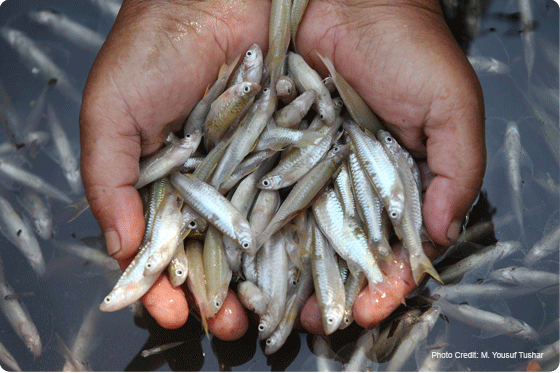
Animal welfare has become a hot button issue in the aquaculture industry over recent years. There is great debate both in the United States and internationally over what degree of welfare protection, if any, farmed fish should be entitled to during their lives and at slaughter. Some argue that fish have the capacity to experience physical sensation and pain, and are, thus, worthy of humane treatment. Others argue that scientific evidence has not yet reached a consensus regarding fish sentience. The regulatory treatment of fish health and fish welfare can also spur controversy. While current, domestic laws aim to mitigate fish health issues that could impact humans (such as disease and parasites), they do not regulate humane treatment. Any mention of fish welfare in current U.S. law stems from measures and guidelines enacted to protect human health—an omission many argue should be rectified.
Welfare regulations for farmed fish vary greatly from country to country. While no federal law related to farmed fish welfare currently exists in the United States, various other countries have implemented national legislation, guidelines, or codes of practice that regulate the humane treatment of farmed fish—during transport and slaughter, in particular. Where such measures fall short, the private sector often steps in—creating industry-regulated codes of practice and schemes aimed at safeguarding fish welfare. This fact sheet provides a brief overview of public and private practice standards in the United States and Europe related to fish welfare in the aquaculture industry.
Public Standards
Aquaculturists may also look to private practice standards to find guidance regarding how to best provide humane treatment for farmed fish (and, in fact, this is the only option available to farmers in the United States due to a lack of federal or state agency guidance). International, private standards are voluntary and address animal welfare during production, transport, and slaughter at different levels. Certification of these standards is based on independent farm audits carried out by a third-party certification body. Some of the most well-known international standards include: Global Aquaculture Alliance’s (GAA) Best Aquaculture Practices (BAP), GlobalGAP, Aquaculture Stewardship Council (ASC), and RSPCA’s ethical food label.
Private Standards
In reviewing the statutory scheme, the Court first looked to the MSA’s findings and purpose statement, which mentions both fish “found” off the coast of the United States and the “species which dwell” off the coasts as natural resources, but failed to mention aquaculture or the management of fish as crops. Although the MSA mentions aquaculture three times, it does so in only immaterial provisions. Furthermore, the court found the operation of the MSA as a whole to be incompatible with aquaculture. Terms like overfishing and maximum sustainable yield are clearly inapplicable to aquaculture, indicating to the court that Congress did not intend for the MSA to grant NMFS the authority to regulate aquaculture.
GAA’s BAP program, for example, is an international certification system that verifies environmentally and socially responsible processes under which farmed finfish, shellfish, and crustaceans are produced. Facilities that participate in BAP certification must apply the program’s standardized best management practices in every phase of their operations in order to earn a “Best Aquaculture Practices Certified” label for their products. The BAP program makes provisions for commercial fish welfare at several points in its standards. However, while welfare is most comprehensively addressed in GAA’s Salmon Farms standards, it is less so in the general Finfish and Crustacean Farms standards, which apply to all other species. On salmon farms, welfare is part of twelve standards, with each requiring measures such as humane stunning before slaughter as well as mandatory oversight and reporting by a designated health professional.
The emphasis on salmon and a limited number of other highly valued fish species is pervasive throughout private certification programs. For example, in 2015, salmon accounted for 56% of the global certified total of farmed fish, with pangasius (catfish), tilapia, trout, and sea bream following close behind. In contrast, carp accounts for 39% of global aquaculture production, but has no significant certified volume. Also, the number of standards addressing fish welfare during transport and slaughter pales in comparison to those concerning terrestrial farm animal welfare.
In Sum
While the welfare of all farmed animals is expected to become a growing topic of conversation in the coming years, the private sector is likely to continue to take the lead while governments work on gathering and harmonizing applicable information before establishing additional national and international legislation. As of right now, European countries are far more likely than the United States to promulgate such regulations. However, as attention grows and more non-governmental standards emerge, there may be increased pressure on regulatory agencies in the United States to follow along a similar path as Europe. For more information about existing U.S. and international laws regulating farmed fish welfare, please view the National Sea Grant Law Center’s fact sheet entitled “Animal Welfare and Aquaculture ‘Quick Takes’”.












